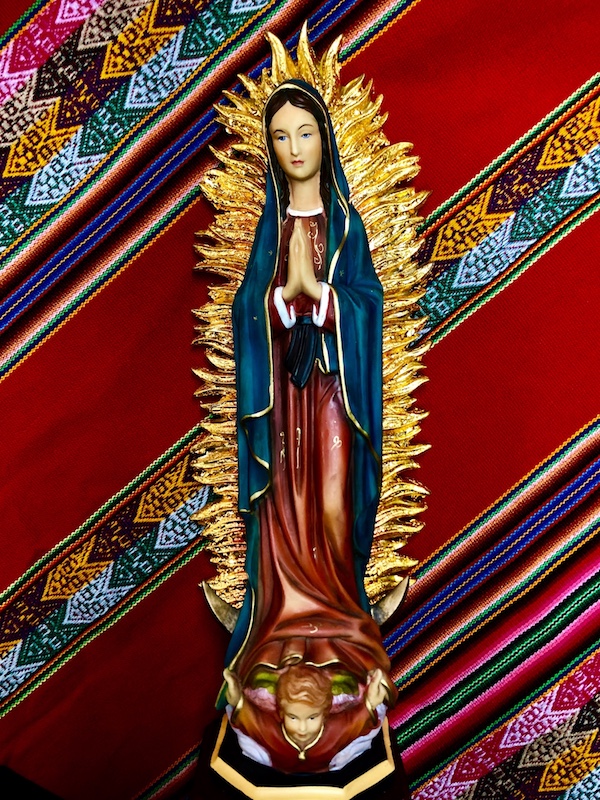When I was a kid visiting my grandfather’s house, one of the ways I would entertain myself was to read his copy of the Old Farmer’s Almanac. There was all kinds of folklore and practical advice, including the mundane. For instance, within its pages were the answers to questions I never thought anyone would ask, such as “What is the best day this month to get a haircut?” My hand to God, friends, apparently people wonder about this. I suspect that the trove of trivia that rattles around my brain comes from reading weird stuff like this at elderly relatives’ houses, which is a reminder to me of the lengths to which some of us will go to avoid being bored.
I was thinking about reading the Almanac a couple of weeks ago, because it was especially a Thanksgiving memory—as the men in our family played dominoes and I sought to escape being herded into my step-grandmother’s tiny kitchen to do the “wimmin’s work” as Grandma Leona called it, I would grab an Almanac and a Reader’s Digest and skedaddle over to the park across the street, no matter how cold it was.
So a few days ago, I was looking through the online version of the Old Farmer’s Almanac—and this confirms that yes, absolutely everything is online now. Nonetheless, I learned something fascinating: at 12:12 am this morning, on this 12th day of the 12th month, according to the almanac, the moon was in what is called “peak fullness” in its cycle. December’s full moon was traditionally called “the Full Cold Moon” or the “Long Nights Moon” by our indigenous forebears, due to the coldness of December, ushering in the winter months officially, and its proximity to the longest night of the year—the winter solstice on December 21. This moon also shines above the horizon for a longer-than-average time. December’s full moon also takes place during the Geminid meteor shower. It’s almost like nature decides to put on a full show starting from the earliest minutes of this day, in an attempt to make up for how cold it is for most of us.
The mention of moon and stars also is a reminder that today is the Feast Day of Our Lady of Guadalupe. For several years now, I have had a figurine of the Virgin of Guadalupe on my desk– her blue mantle spangled with stars, the sun’s rays a corona around her, and her feet balancing on a crescent moon. To my mind, it’s a perfect feast for Advent, for as the moon waxes and wanes throughout each month, so too often is the life of faith. I’ve spent many hours in prayer, “admiring the Virgin as she stands upon the moon,” as singer-songwriter Caroline Herring describes it in her song “Abuelita,” one of her beautiful songs of everyday faith.
In the depiction of the Virgin of Guadalupe, we see the strength of her beautiful, radiant brown face as, humble yet alert, she gazes down toward her right with her hands clasped in prayer. Her pregnant belly beneath her dawn-colored gown calls to mind the already-but-not-yet aspect of this season of expectation, of waiting and watchfulness, of being willing to say yes to God and embrace the life to which God calls us and Jesus exemplifies and enfleshes for us.
Mary willingly, boldly assented to be the handmaid of the Lord, not meekly, but with a victory song that wove a dream of justice and liberation—a song that described the kingdom of God her son came to birth into being. And the Virgin of Guadalupe herself has been claimed by the oppressed throughout the Americas, particularly indigenous peoples, as a testament to her proclamation of a God who pulls down the mighty and fills the need of the hungry—filled like that distended orb hanging like a promise in the night sky. Her vision is a vision of the people—a vision built on the hope of the not-yet that we proclaim in Advent.
During this season in particular, as we wait for the light of Christ to illumine us, and as we light candles on our Advent wreath, I look at that moon under Mary’s feet and think about what a perfect symbol the moon is for what Mary teaches us as a faithful servant of God. Just as the moon itself reflects the light of the sun, Mary’s boldness, agency, and compassion reflects the light of Christ, her son, who was associated with the sun in medieval Christian iconography. The moon with its monthly cycle of birth, growth, death, and rebirth reminds me of the hope we have in resurrection and new life through Christ.
And indeed, what if we saw our waiting during this Advent season as being pregnant with possibility—burgeoning like that beautiful moon overhead, calling us to reflect Christ’s light ourselves into the place most longing for the gifts of justice, peace, and light?
Collect for the Feast of the Virgin of Guadalupe (from the USCCB)
O God, Father of mercies, who placed your people under the singular protection of your Son’s most holy Mother, grant that all who invoke the Blessed Virgin of Guadalupe may seek with ever more lively faith the progress of peoples in the ways of justice and of peace; through our Lord Jesus Christ, your Son, who lives and reigns with you in the unity of the Holy Spirit, one God, for ever and ever. Amen.
The Rev. Leslie Scoopmire is a retired teacher and a priest in the Diocese of Missouri. She is priest-in-charge of St. Martin’s Episcopal Church in Ellisville, MO. She posts daily prayers at her blog Abiding In Hope, and collects spiritual writings and images at Poems, Psalms, and Prayers.

